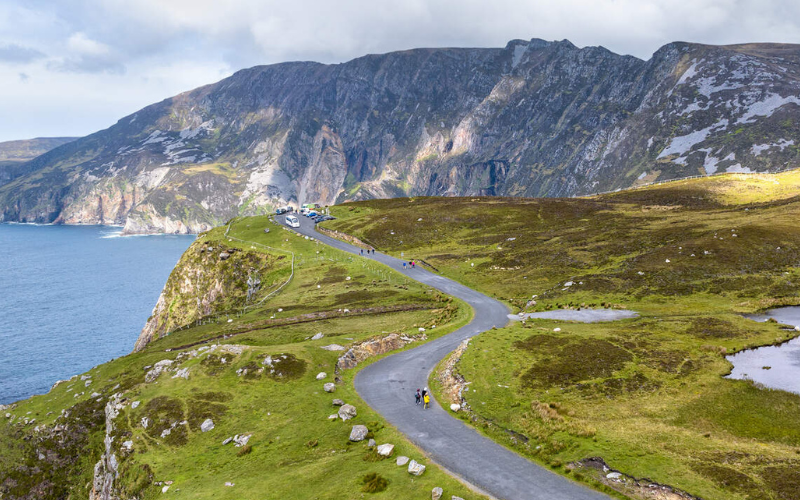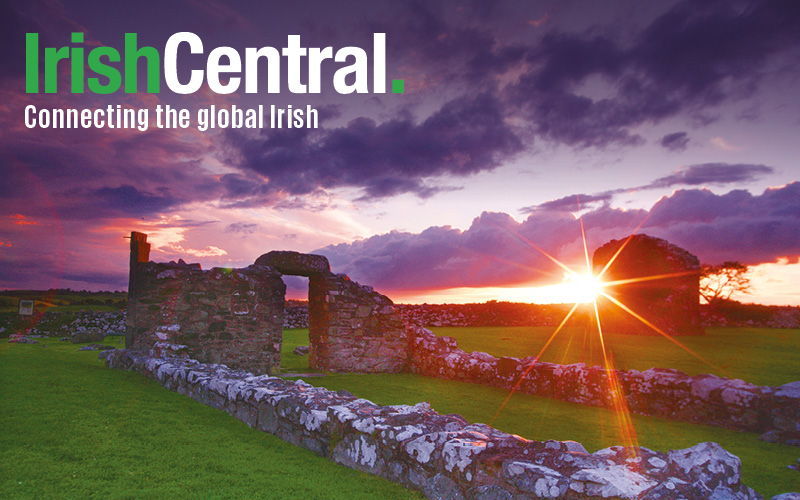Producing a list of 20 books which every Irish-American should read was both joyous and painful. The joy, obviously, came as we pored over the many volumes, revisiting the beautiful sentences, the haunted memories. The pain, however, was knowing that, inevitably, some brilliant books would have to be excluded. Authors who should have, but could not make this list did so for a variety of reasons. For example, we decided to focus solely on books in which the author and book itself had a fairly explicit Irish-American connection. This left the brilliant fiction of John Kennedy Toole, J.F. Powers and Flannery O'Connor (not to mention John Steinbeck, F. Scott Fitzgerald, John O'Hara and William Faulkner) just outside the fence. Authors such as Jimmy Breslin, Dennis Smith and Tom Fleming, meanwhile, have produced such an impressive body of work that it was tough to single out just one of their books. Other books of great merit are sadly out of print or very difficult to find. Then there is the great Finley Peter Dunne - arguably the first great chronicler of Irish America. Unfortunately, the bulk of his late 19th and early 20th century writings come in the form of newspaper columns, which don't quite adapt well to book form. In the end, each reader will be pained to see that their particular favourite Irish-American book or author did not quite make it to this list. Feel free to let us know. Until then, let the debate begin. Here (in no particular order) are our picks for the Top 20 books every Irish-American should read. The Encyclopaedia of the Irish in America Editor Michael Glazier This indispensable resource was published in 1999 and is the most authoritative book about all things Irish-American. In this 1,000-page volume, there are entries on all 50 states, music, the military and Irish relations with other ethnic groups. If it's not in here, it's probably not Irish-American. The Studs Lonigan Trilogy By James T. Farrell The greatest extended work of Irish-American fiction. "Studs Lonigan," "The Young Manhood of Studs Lonigan" and "Judgment Day" have been hailed by the likes of Pete Hamill and Norman Mailer for their unflinching depiction of the 1930s Chicago Irish. They were no longer slum dwellers, but still not quite respectable. You could say Farrell has little affection for his subjects, often depicting them with disdain one might expect from an anti-Irish nativist. Nevertheless, following the recent 100th anniversary of Farrell's birth, it was gratifying to see a renewed interest and respect for Farrell's masterpiece. Angela's Ashes By Frank McCourt After the years on the best-seller lists, the movie and the sequel, readers might almost fear rereading "Angela's Ashes." They may look back and fear it wasn't quite as good as it seemed. Fear not. McCourt's journey from impoverished Limerick to New York City retains all of its powers, as if the book's narrator will forever be young, hungry, angry and awed by the power of his mother's love. American Requiem: God, My Father and the War that Came Between Us. By James Carroll Clearly, 1996 was a good year for Irish-American books because joining Andrea Barrett as a winner at the National Book Awards was James Carroll. One hundred and twenty years after the famine, families were again rent asunder, this time in the U.S., this time by the Vietnam War. That, as well as changes within the Catholic Church, struck Irish-Americans in a particular way, and Carroll chronicles how these profound forces ultimately drove him and his father apart. A onetime priest who left the Church, Carroll - along with the anti-war Berrigan brothers, who Carroll defended - reminds us in this unflinching and honest book of the radical aspect of Irish Catholicism in the U.S. Emigrants and Exiles: Ireland and the Irish Exodus to North America By Kerby Miller Published in 1985, this groundbreaking history shed new light on the immigrant experience by focusing on the written letters of the immigrants themselves. In addition, Miller explored the impact of immigration not just on one city or region but all of North America. A finalist for the Pulitzer Prize, Miller's book literally changed the way people thought about Irish immigration and remains enlightening and informative. A Drinking Life By Pete Hamill Contemporary Irish America's greatest writer, Hamill seemed to outdo even himself with this memoir, which is equally touching and unnerving. With wonderful digressions into New York's newspaper world, romances with Jackie O. and Shirley MacLaine and Hamill's Brooklyn youth as the child of Belfast immigrants, this book's heart is the evolution of an addiction which nearly sapped this ambitious writer of his talents. Most recently, those talents produced "Forever," Hamill's glorious time-traveling novel from 2002, in which an Irish-American is granted the gift of eternal life, witnessing everything from the American Revolution to 9/11. Paddy's Lament, Ireland 1846 -1847: Prelude to Hatred By Thomas Gallagher Gallagher's look at the two worst years of the Famine retains its shock, as he persuasively argues that political decisions, rather than natural forces, created mass starvation in Ireland, which led to millions of deaths and a diaspora that changed world history. The child of Irish immigrants, Gallagher changed the way future authors approached the Famine as a subject. Memories of a Catholic Girlhood By Mary McCarthy When McCarthy's memoir was published in 1957, anti-Catholicism remained a significant problem in the U.S. A superficial reader might suggest that this book provides fodder for bigots. But McCarthy's book - which chronicles a peaceful life until 1918, when McCarthy's parents died and she was sent to live with authoritarian relatives - poses tough questions about faith in broad, and serious, terms. McCarthy's extended family was a volatile mix of Jews, Protestants, Irish Catholics and atheists. Her guardians were devout as well as cruel, as illustrated in the famous scenes in which McCarthy's mouth was taped shut at night so that she wouldn't make noise. But McCarthy later cites time spent in a seminary, when she began reading Latin, as central to developing her famously sharp mind. In the end, McCarthy's is a vivid, powerful memoir of religious and intellectual growth which confronts harsh truths about aspects of the Irish Catholic experience in the U.S. The Irish Voice in America By Charles Fanning Published in 1999 by the University of Kentucky, this is easily the most thorough and important work about Irish writing in the U.S. Fanning spans the centuries and adds insightful dashes of history and criticism. It is not likely any other scholar will match the high standard set by Fanning, who directs the Irish Studies program at Southern Illinois University and has also published important works about James Farrell and Finley Peter Dunne. A Tree Grows in Brooklyn By Betty Smith This perennial childhood favourite of Irish tenement life, published in 1943 and made into a famous Elia Kazan movie two years later, tells the story of young Francie Nolan and her dad, a singing waiter whose trademark tune is "Molly Malone." This is fitting because both the singer and song are haunted by death. Yet generations return to Francie because despite all the adversity she can still find hope, literally out the window, in the tree which provides this sentimental yet magical book its title. How the Irish Saved Civilization: The Untold Story of Ireland's Heroic Role from the Fall of Rome to the Rise of Medieval EuropeBy Thomas Cahill A phenomenon when it was published in 1995, Cahill's book focuses on a time when there was barely an Irish nation, much less an American one. But the vast success of this book, about how Irish monks preserved classic written works of the Western world, illustrated just how interested Irish America had become in the history of their ancestral Ireland. The Ginger Man By J.P. Donleavy Donleavy is an unusual case, an American-born writer who moved to Ireland, where his parents were born. "The Ginger Man" - fittingly, a book about an American in Ireland - is a gem of a book which often seems on the verge of being forgotten. But in Sebastian Dangerfield, Donleavy turned the Irish-American experience on its head, and created a character who is equal part the Beats and Tristam Shandy. Best known for its bawdy sexuality which shocked many 1950s readers, "The Ginger Man" is also poignant, hilarious and utterly unforgettable. The Fitzgeralds and the Kennedys: An American Saga. By Doris Kearns Goodwin Kennedy burnout is a natural reaction given America's unending obsession with this Irish-American royal family. But Goodwin's massive bio is a proper remedy, separating fact from fiction, myth from reality, to tell perhaps the quintessential Irish-American story. An honourable mention for this topic should also go to Thomas Maier's excellent "The Kennedys: America's Emerald Kings." Ironweed By William Kennedy It is no longer adequate to compare William Kennedy to Faulkner or Joyce. Yes, all of them focused their vast artistic energies on remote slices of the map, in Kennedy's case, Albany, New York. But Kennedy's sustained brilliance puts him in a league all his own. In his Albany cycle, which also includes the rollicking Legs as well as Billy Phelan's Greatest Game, "Ironweed" (from 1983) is the most astonishing achievement, focusing on a determined yet doomed turn-of-the-century drifter. Poetic and dreamlike, Kennedy vies with O'Neill as Irish America's great explorer of dashed hope, all the while maintaining a hell of a sense of humour. That Kennedy could publish the cycle's second-best entry, the brilliant, uproarious Roscoe, just after the turn of the 21st century, is a testament to his powers. Ship Fever By Andrea Barrett This unjustly underread work, which won the National Book Award in 1996, tells a series of stories about life in the 19th century. The harrowing title story examines the spread of disease on a coffin ship headed from Ireland to Quebec, a destination during the tragedy of the Irish famine which is also often underappreciated. This is historical fiction of the highest order: learned, detailed and illuminating.




Comments